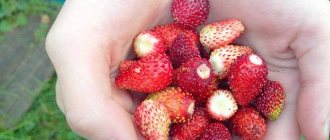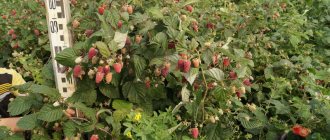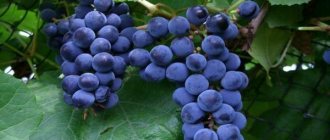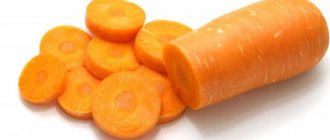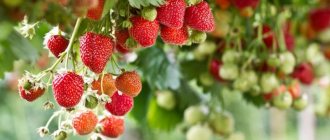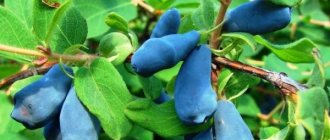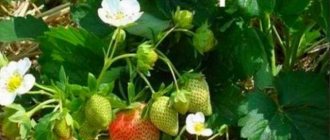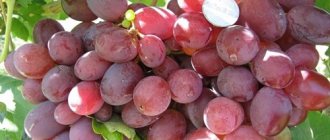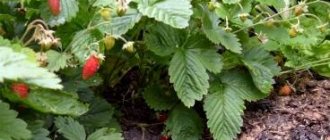Description of the variety
Acts as the originator of the variety. She monitors the preservation of the original varietal properties of Baron Solemacher strawberries and recommends them for cultivation in all regions of Russia - in garden plots and greenhouses and even at home, on window sills.
Strawberry bushes are semi-spreading, squat - no higher than 20 cm, shaped, covered with small light green leaves with jagged edges. The pubescence of the leaves gives them a silvery tint. Strawberry flowers are quite small, bisexual, located on short peduncles below the leaves.
More complete information about the characteristics of alpine strawberry varieties can be found in the article.
Baron Solemacher's strawberries begin to bear fruit in the first year after planting. For 3-4 years, the remontant strawberry variety consistently produces high yields, more than 83 c/ha. At the end of this period, the strawberry bushes should be replanted.
Important! The absence of mustaches in Baron Solemacher strawberries allows you to save planting area, as well as time for trimming them.
Small berries with dense, juicy pulp are distinguished by:
- bright, rich red color with a glossy sheen;
- sweet taste with slightly noticeable sourness;
- unique strawberry aroma;
- conical shape;
- average weight up to 4 g;
- excellent presentation, high tasting score.
Baron Solemacher strawberries bloom in May, and the first harvest of berries can be harvested in early summer. Strawberries bear fruit continuously throughout the season, until frost. In the south, the season lasts until November; in the northern regions, strawberries bear fruit until the middle or end of September.
Advantages and disadvantages
The strawberry variety Baron Solemacher has many advantages that far outweigh the relative disadvantages. They can be found in the table below.
| Advantages of the variety | Flaws |
| Unpretentiousness to weather conditions - the bushes bloom and bear fruit even in rainy seasons | After 3-4 years, strawberries need to be replanted |
| Decorative – compact, spherical strawberry bushes become a wonderful garden decoration throughout the summer | Timely and high-quality nutrition is necessary |
| High yield - strawberries bear fruit abundantly until frost | Requires careful care |
| Due to the absence of mustaches, strawberry bushes occupy a small area in the garden bed | |
| Strawberry seeds demonstrate high germination - up to 95% | |
| Strawberries are characterized by good frost and drought resistance | |
| Highly resistant to diseases and pests |
Advantages and disadvantages of remontant strawberries Baron Solemacher
The strawberry variety Baron Solemacher has many advantages, which are best familiarized with in advance. The benefits of garden strawberries include:
- Unpretentiousness . Abundant flowering and fruiting do not depend on weather conditions; even in a rainy summer you can reap a generous harvest.
- High stability . Bushes are rarely affected by diseases or insect pests.
- Long-term fruiting . The remontant variety will delight you with delicious berries until October (in warm regions the fruits ripen until November).
- Compactness . Due to the absence of mustaches, strawberries take up little space in the garden bed - you can plant the bushes at a short distance.
- Possibility to grow from seeds . The planting material of the variety is highly similar, so even novice gardeners can easily grow young bushes.
- Resistance to unstable climatic conditions . Baron Solemacher can withstand low temperatures in winter (up to 35 degrees below zero) and high temperatures in summer. Even a prolonged drought will not destroy the plants, although a lack of moisture in the soil may affect the size of the fruit.
The variety has few disadvantages, one of them is that it will have to be replanted every 3-4 years, fruiting is sharply reduced. Another disadvantage in the characteristics of remontant strawberries Baron Solemacher is that you will have to regularly add nutritional compounds; without fertilizing, the number and size of the berries will decrease significantly.
Planting strawberries
Seedlings can be planted in beds in early June.
Selection of seedlings
To plant the Baron Solemacher variety, you need to select healthy, strong seedlings.
Their root system:
- must be fibrous with a root collar diameter of at least 6 mm;
- without damage;
- with a light green live heart;
- The roots should be juicy and not wilted.
Choosing a planting site and preparing the soil
The Baron Solemacher variety responds well to heat and sunlight, which must be taken into account when choosing a site for it. It is not recommended to plant it:
- in damp lowlands;
- in areas with close groundwater;
- in the beds where potatoes or tomatoes used to grow.
If there is high humidity in the area, then you need to prepare high beds with sides for the strawberry bushes.
Planting scheme
The optimal distance between the bushes should ensure normal aeration, as they will grow. Usually a gap of 30-35 cm is left, and up to 70 cm between the rows. We must remember that you should not bury the growing point, but you should not expose the root system of strawberries either.
Features of growing from seeds
Growing strawberries of the Baron Solemacher variety from seeds is not difficult. However, the seeds take quite a long time to germinate, so it is advisable to sow at the end of February; if necessary, it is permissible to carry out work in the first ten days of March. When performing sowing, the following recommendations should be taken into account:
- the main properties that soil must have for growing strawberry seedlings are sufficient lightness and good water permeability;
- immediately before sowing, the seeds should be soaked in a solution of “Epin” or “Humate”, and then slightly dried and sown on the surface of well-moistened soil;
- The container with seed must be covered with glass or film to maintain optimal humidity.
The ideal temperature for the growth and development of seedlings is approximately 18 ° C and should be maintained throughout the entire growing period.
Seedlings should be planted in a permanent place in the first ten days of June. The standard distance between strawberry bushes should be approximately 30-35 cm. When placed in open ground, it is very important to choose the most illuminated and elevated place in the garden plot.
Care
The agricultural technology of the Baron Solemacher variety consists of timely procedures for watering, fertilizing and loosening.
Care in spring
Spring work on strawberry beds consists of:
- in loosening the soil under bushes;
- cleaning of last year's mulch and leaves, along with which the beds are cleared of pests that overwintered in it;
- pruning damaged shoots and leaves;
- regular watering;
- treating bushes from pests.
Watering and mulching
Strawberry Baron Solemacher especially needs watering and fertilizing:
- before the flowering phase;
- after its completion;
- during the period of appearance of ovaries.
The most effective is the drip irrigation system. It is good to water the strawberry bushes after picking the berries to stimulate further ripening.
Extra plants in the garden:
- take nutrients from strawberry bushes;
- reduce their illumination;
- retain moisture.
Therefore, after the strawberries begin to bloom, you need to:
- organize weeding of bushes;
- clear the beds of weeds;
- loosen the soil, ensuring its aeration;
- mulch the bushes with straw or sawdust.
Important! Loosening under the bushes must be done carefully, since the root system of strawberries is located close to the surface.
Fertilizing
Attention! The Baron Solemacher variety responds well to fertilizers. During the growing season it is fed several times.
Table 2 shows the types of fertilizing and the timing of their application.
| Feeding time | Types of fertilizers |
| Spring months can be spent as early as March | The greatest preference is given to nitrogen fertilizers - potassium and ammonium nitrate, diluted manure |
| The phase of appearance of green ovaries | Add compost, slurry, potassium and phosphorus salts |
| In the fall, around September, when the berry picking ends | Complex fertilizers, potassium, phosphorus, bird droppings |
Preparing for winter
After collecting the last ripe berries, you need to prepare the Baron Solemacher strawberry bushes for wintering. To do this you need:
- inspect and sprinkle the exposed roots with soil without covering the outlet;
- mulch the bushes to insulate the roots;
- with the onset of frost, you can cover the strawberries, but during thaws they should be ventilated so that the bushes do not rot;
- place spruce branches between the rows, which will retain a dense layer of snow on the bushes.
Attention! Learn more about preparing for winter.
Treatment of strawberries against diseases and pests
Despite their high immunity, strawberries can be affected by rot and spotting. In order to prevent the disease, it is recommended to spray the bushes with 3% Bordeaux mixture in the spring, and 1% colloidal sulfur and copper-based preparations in the summer.
At the stage of fruit ripening, treatment with Lepidocide is necessary. In autumn, the plantation is sprayed with 1% Bordeaux mixture. It is effective to use a solution of Karbofos and Keltan against strawberry mites.
Disease Control
Baron Solemacher strawberries are resistant to most of the most common pathologies - black and gray rot, various types of spotting and others. However, it requires regular preventative spraying during the growing season.
Attention! Learn more about the treatment of strawberry diseases.
The timing of treatments and types of drugs are visible from the table.
| Processing times | Name of the drug |
| Early spring | 3% Bordeaux mixture |
| The appearance of leaves and flower stalks | A mixture of 1% Bordeaux mixture and 1% colloidal sulfur |
| Budding and flowering | Same drugs |
| Berry ripening period | Lepidocid solution |
| Autumn processing | Treatment before wintering with a 1% solution of Bordeaux mixture |
Harvesting
Since the berries ripen unevenly, the harvest is carried out in several stages. For fresh consumption, the crop is harvested every 2-3 days in cloudy weather, and every other day in hot summers. The ripe berry is carefully removed from the bush with a cup and part of the stalk.
It is better to collect berries in small baskets, since when collected in deep baskets, the bottom layer wrinkles, the strawberries release juice and lose their presentation.
It is better to immediately consume the harvested fresh crops or make preparations for the winter. If there is a lot of harvest and it is not possible to immediately process the berries, the harvest can be stored in a cool place for no more than 7 days or frozen.
Collection and storage of berries
When the time for mass ripening of Baron Solemacher strawberries begins, they are harvested every other day, early in the morning or in the evening. Usually the largest fruits are produced by the first strawberry harvest. If it is necessary to transport the berries, they need to be picked two days before full ripeness, when the accumulation of sugar has already reached its maximum value. Berries must be transported in the same container in which they were collected, otherwise their quality will decrease. Baskets or flat boxes are usually used to collect berries. Strawberries can be stored for up to a week if immediately after picking they are cooled to 1-2 degrees, good ventilation and humidity up to 95% are provided.
Reproduction
The berry plantation should be dug up and renewed every four years. The easiest option is to dig up an overgrown bush and divide it into several parts. Plant the strongest shoots in a new prepared place.
More on the topic: Strawberry varieties for temperate climates
Important! After division, at least three white roots should remain on each plant. For better survival.
The variety also reproduces well by seeds. Both in seedlings and in the ground. The germination rate of the variety's seeds is up to 95%. It is believed that the best seeds for propagation are cut from the top of the berry.
Growing in pots
Baron Solemacher strawberries can also be grown in pots or boxes on the windowsill. Caring for them is as simple as in the garden beds:
- the pots are filled with fertile soil mixture;
- a drainage layer is laid out at the bottom;
- one bush is planted in each of them;
- strawberry plantings are placed on a windowsill or on a balcony on the south side, where there is better lighting;
- In winter, strawberry bushes should be provided with additional lighting;
- Watering and fertilizing are carried out as usual.
The difference between homemade strawberry bushes is the need for artificial pollination.
Attention! The nuances of growing strawberries in pots.
Varietal features
Before planting strawberries, Baron Solemacher should familiarize yourself with the key characteristics of the crop.
Bush size and leaf blade appearance
This is a remontant crop, which is characterized by an early ripening period. It is characterized by squat bushes 15-20 centimeters high. They are distinguished by a medium spreading crown and spherical shape. The foliage has a light green tint. It has teeth and is covered with fluff.
Flowering and pollination
A characteristic feature of the plant is short peduncles, which are located below the foliage level. In May they bear many white flowers. Flowering is considered bisexual, so strawberries are well pollinated. If the crop is grown at home, it requires artificial pollination.
Ripening time and yield
The culture is distinguished by early fruit ripening. The berries are small in size. Their weight does not exceed 4 grams. The fruits are conical in shape and have a pronounced shine and a red tint. The flesh is also red. It is distinguished by its high juiciness and dense consistency.
Strawberries are characterized by continuous fruiting throughout the season. It lasts until frost. In the south, the harvest can be harvested until November; in the north, strawberries bear fruit until the end of September.
This variety is considered high-yielding. With proper care, it is possible to collect up to 83.8 centners of berries from 1 hectare.
Taste qualities of the fruit and its further sale
The fruits have a sweet and sour taste and a pronounced aroma. Average sugar content parameters are 7.5-7.7%, while acidity is at the level of 0.6-0.8%. According to the tasting assessment, the fruits were awarded 4.2 points.
Strawberries of this variety are distinguished by their dessert purpose. After harvesting, the fruits remain fresh for a long time and can easily be transported. They can be eaten fresh, frozen, or used to make jam, jelly, and compote.
Description - from the world by thread
Grown in open ground, indoors, incl. in small-volume containers for commercial purposes, valued in amateur gardening. For decorative and other purposes it is grown in the so-called. indoor and balcony culture - on loggias, window sills, in flowerpots, for decorative purposes - to decorate front gardens, borders, etc.
Characteristics from the words of distributors represented by agricultural firms and nurseries, satisfied and not very satisfied breeders, gardeners and summer residents - briefly pomological characteristics, a succinct and abstract description.
- The bush is compact, semi-spreading (hemispherical) habit, low - 15-18 cm.
- Propagated by dividing the bush and seeds.
- Does not form rosettes - there is no bevel formation.
- The peduncles are erect, strong, strong, located above or level with the leaves, hold the berries, and do not lie down.
- The berry is intense red, rich, evenly colored. The achenes are not pressed into the pulp, the skin has a moderate shine. The shape is conical - oblong, length 2-3 cm, thickened part (equator of the fruit) - no more than 1.2-2 cm. The shape is regular, without a neck. Average weight is 4-6 g. The pulp is sugary, sweet and has the aroma of wild strawberries, very pleasant - juicy, tight, tasty.
In the conditions of the Moscow region, central Russia, it has proven winter hardiness - especially in the presence of snow cover with a height of 10 cm. In Ukraine it has also proven excellent winter hardiness. However, this does not negate the need to grow in a cover crop - under spunbond or any breathable agrofibre.
Advantages:
- Productive and unpretentious with high agricultural technology;
- good adaptation to soil and climatic conditions, high winter hardiness;
- in closed ground, in indoor culture, it is not too demanding on additional lighting - with a lack of light, chlorosis is not so desperate, and seedlings do not grow from seeds so quickly.
One of the downsides is that it is worth emphasizing the exactingness of care: generous in return, Rügen is equally demanding of fertilizing - of a properly planned nutritional plan, of watering. Otherwise, the yield is purely decorative, winter hardiness is average.
Also, some note that the aroma is not quite strawberry - more precisely, not quite foresty. The question of taste is controversial, and whether it is worth discussing it with people looking for wild berries in a supermarket or at the market - the answer suggests itself. Yes, any cultural form will be different from the forest one that most of us only imagine, and some of us only remember.
It will happen, no matter what the advertising descriptions say. But you shouldn’t blame them either: close to the forest one means it resembles, but does not mean complete identity. And for connoisseurs of real wild berries - welcome, as they say, to the countries of Scandinavia, to England, to Poland - there are true gifts of nature at such a price - that you will immediately remember with love the familiar strawberry with its identical aroma. By the way, in the above-mentioned countries of enlightened Europe - in Finland the same, self-picking is still in price and in fashion: they give you a basket, a stick - to fight off the bushes, you pay a lot of money - and off you go, for berries, into the forests - here it is, civilization.
Sowing is carried out in March-February. In the absence of additional lighting, it is better to postpone planting seeds until the end of February - beginning of March.
To speed up germination, stratification is practiced - kept for 2-3 days at a temperature of 5-7 C, subsequently maintaining the temperature to 22 C. At the phase of 1-3 true leaves, Rügen seedlings are dived - the elongated root collar is buried deep into the soil with the further formation of lateral roots.
In May, at the stage of 6-7 true leaves, seedlings are planted in open ground. It is advisable to maintain a planting distance of 25-30 cm. Small bushes bear fruit abundantly, and it is better not to use a shortened planting scheme of 20-25 cm between plants: plants that require intensive nutrition and irrigation need a large feeding area.
According to reviews, it needs frequent rejuvenation - in the third year after planting it loses the inherent qualities of the variety, so to speak, it grows - it becomes smaller, deformed, and reduces productivity to a minimum. As a warning, experienced gardeners divide the bushes in the second year.
As for the requirements - do not reduce the feeding area, carry out sanitary cleaning and professional treatment if necessary, just work out the feeding scheme well, provide sufficient watering - drip irrigation will help. Just dedicate time - and this exactingness will not seem excessive.
Caring for strawberries at home
- Strawberries can be grown in large (at least 3 liters) containers, balcony boxes or small pots, in each of which one bush is planted.
Strawberries on the window
- The soil needs to be prepared as indicated at the beginning of the article, and a layer of drainage should be added to the bottom of the pots.
- The containers are placed on a balcony or windowsill on the south side - this way the strawberries will receive a sufficient amount of sunlight.
- Bushes can only overwinter on a well-insulated balcony or indoors, and in autumn and winter they need lighting (12-14 hours a day).
- Fertilizing, watering and loosening the soil are carried out in the usual way.
Strawberries on the balcony
- Unlike strawberries, which grow outdoors, houseplants need to be pollinated. To do this, you need to gently shake the pots, or transfer pollen from one flower to another every day using a brush or cotton pad.
Growing “Baron Solemacher” strawberries from seeds at home is a rather painstaking task, but in the end the bushes of the plant will delight their owner with tasty and healthy berries with an unforgettable aroma.
